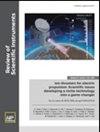热核实验堆赤道端口 12 的可见光和红外广角观察系统诊断的设计、论证和原型制作。
IF 1.3
4区 工程技术
Q3 INSTRUMENTS & INSTRUMENTATION
引用次数: 0
摘要
热核实验堆赤道可见光和红外广角观察系统(WAVS)将通过提供等离子体组件的表面温度测量数据,在保护等离子体组件方面发挥重要作用。它还将为可见光范围内的等离子体发射成像。WAVS 由位于 3 号、9 号、12 号和 17 号四个赤道端口(EPs)的 15 条视线组成。其开发工作由法国原子能委员会(CEA)、CIEMAT、INTA 和 Bertin Technologies 组成的财团根据 F4E 资助的赠款合同进行。在 EP12 项目中,波纹管系统的舱内和舱外组件已进入最后设计阶段。本文概述了 EP12 在最终设计审查中提出的波纹管系统的光学机械设计。本文章由计算机程序翻译,如有差异,请以英文原文为准。
Design, justification, and prototyping of the visible and infrared wide angle viewing system diagnostic for ITER equatorial port 12.
The ITER equatorial visible and infrared Wide Angle Viewing System (WAVS) will play a major role in the protection of plasma facing components by providing surface temperature measurements of these components. It will also image the plasma emission in the visible range. The WAVS is composed of 15 lines of sight located in four Equatorial Ports (EPs) 3, 9, 12, and 17. Its development is being carried out by the Consortium constituted by CEA, CIEMAT, INTA, and Bertin Technologies, within grant contracts financed by F4E. In the EP12, the in-vessel and ex-vessel components of the WAVS are at their final design phase. This article presents an overview of the opto-mechanical design of the WAVS in the EP12 presented at the final design review.
求助全文
通过发布文献求助,成功后即可免费获取论文全文。
去求助
来源期刊

Review of Scientific Instruments
工程技术-物理:应用
CiteScore
3.00
自引率
12.50%
发文量
758
审稿时长
2.6 months
期刊介绍:
Review of Scientific Instruments, is committed to the publication of advances in scientific instruments, apparatuses, and techniques. RSI seeks to meet the needs of engineers and scientists in physics, chemistry, and the life sciences.
 求助内容:
求助内容: 应助结果提醒方式:
应助结果提醒方式:


